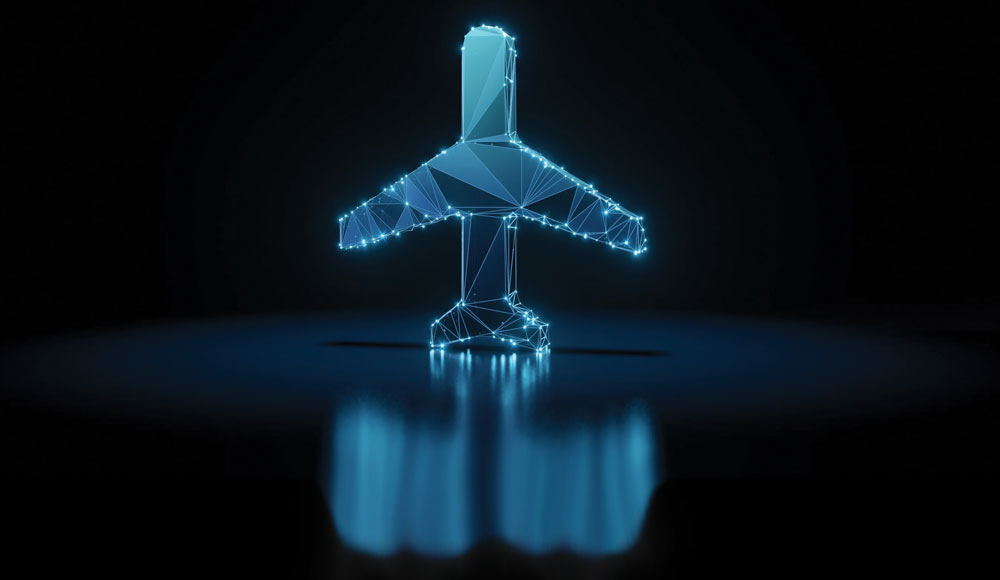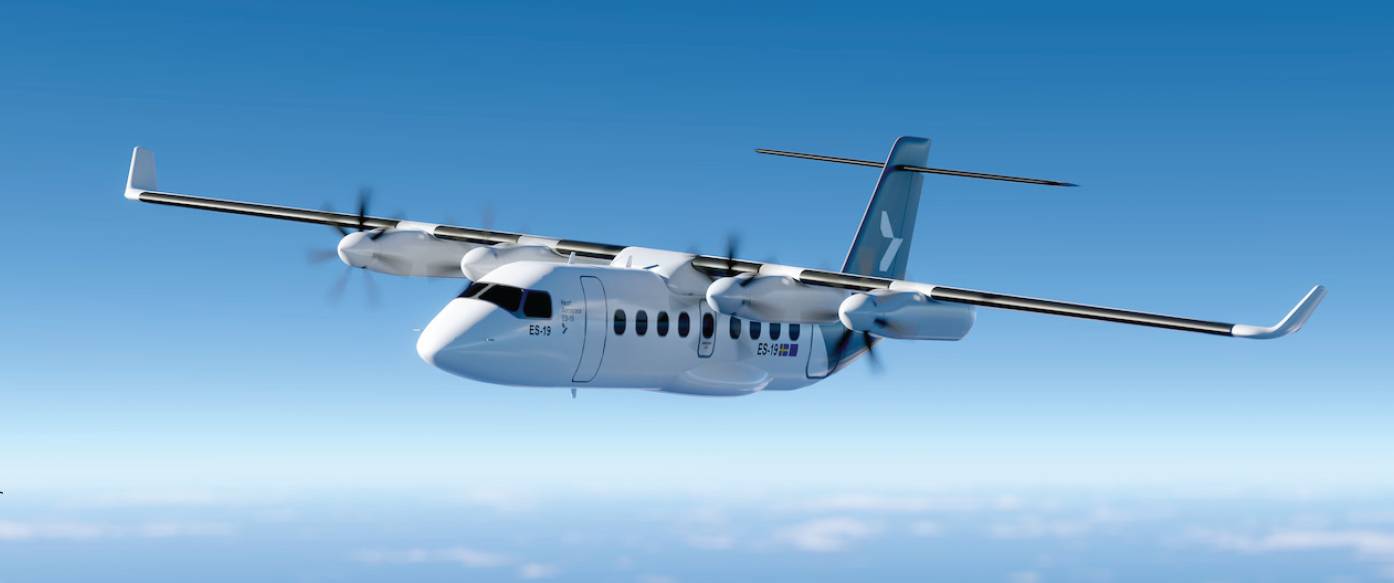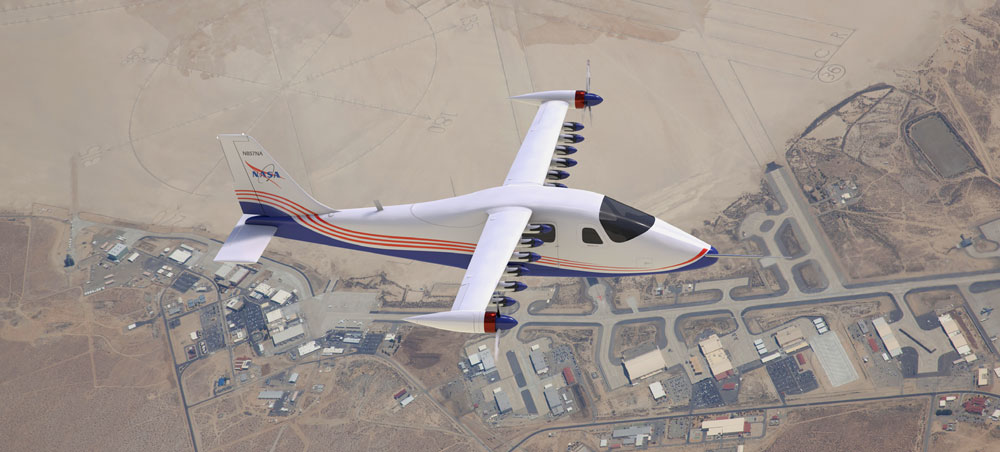AEROSPACE The economics of electric aircraft – part 2
Taking charge of electric aircraft
In the years to come, it is predicted that electric and hybrid-electric passenger aircraft will be developed to replace jet-powered regional aircraft. BILL READ FRAeS asks how airlines can be persuaded to invest in this new technology and how they might make money from their operation.

Within the next decade, it is predicted that the first fleets of non-polluting commercial electric-powered passenger aircraft will begin to enter service. But how realistic are these predictions? Part 1 of this two-part report into the economics of electric aircraft looked at the commercial challenges of selling commercial electric aircraft to operators and the implications for airport operators and service providers. Part 2 now considers how airlines could be persuaded that there is money to be made in game-changing new e-aircraft designs and how they might be operated in commercial service.
Acquisition
It is now time to consider who might actually acquire and operate electric aircraft. Let us imagine that you are a CEO of an airline planning future aircraft acquisitions. The development of larger regional electric aircraft has now reached a point where you are considering ordering some to add to your aircraft fleet.
THE CUSTOMER HAS TO CONSIDER WHICH SUPPLIER IS THE MOST LIKELY TO STAY THE COURSE AND REMAIN IN BUSINESS T O SUPPORT AND UPGRADE THE AIRCRAFT DURING ITS LIFETIME
Although it will look good for the airline’s public image to fly non-polluting ‘green’ aircraft, you will only acquire electric aircraft if you think you can operate at a profit. Not only does there have to be a demand from the air-travelling public to fly on e-aircraft (and an assurance that they are safe) but also a commercial advantage in using e-aircraft over conventionally-fuelled regional jets and turboprops.
As any economist will tell you, the cost of operating an aircraft is more than just the initial purchase cost. Once in service, the aircraft will need to be stored, maintained, recharged, and repaired. People will need to be paid to operate the aircraft – pilots, cabin crew, maintenance staff and airports. An airline will also only operate e-aircraft if the airports it flies into have the necessary ground infrastructure to handle them.
Another element is that of ‘vision’. It is a well-established fact that developing a new aircraft takes time and money. Currently, a new aircraft can take from 5-10 years to design. The time taken between an airline ordering a new aircraft and the aircraft entering service can also take between 3-5 years and the aircraft will then remain in service for 20-30 years. A decision taken now to buy new aircraft will have a long-term impact across the airline’s fleet. This could make airlines hesitant to invest in the first generation of less efficient hybrid-electric aircraft, as operators might prefer to wait until the technology matures and then buy a more advanced second generation of all-electric aircraft. If there are a number of competing e-aircraft manufacturers in the market, the customer has to consider which supplier is the most likely to stay the course and remain in business to support and upgrade the aircraft during its lifetime.
There is the issue of training. Pilots will need training to fly the new hybrid or electric aircraft, possibly also having to learn how to be the sole pilot if airlines take the opportunity to move to single-pilot operations. Training providers will have to develop new e-aircraft simulators for all the different types available. Training may be different for operating hybrid and pure electric designs. There may have to be a new e-electric aircraft pilot certificate.
 Heart Aerospace
Heart Aerospace
Operation
Now – a few years further on into the future, let us now assume that you are the Chief Operating Officer of an airline with a newly acquired fleet of electric regional aircraft. How can you best operate them to make a profit?
The business case for electric aircraft is dependent on three factors: operating costs, passenger demand and meeting the carbon emissions standards demanded by regulators. For an airline, costs will include such elements as staff wages, airport charges, insurance, storage, maintenance, batteries and the cost of battery charging. Some of these may be less than a conventional aircraft; according to electric aircraft developer Ampaire, e-aircraft could offer a 90% reduction in fuel costs, and a 50% reduction in maintenance. However, if you are operating hybrid-electric aircraft which require liquid fuel, some of these pure-electric cost savings may no longer be valid. The batteries used to power the aircraft will also lose their recharging potential over time and will have to be replaced.
The generation game
One of the major elements in every airline’s cost calculations is that of fuel and this will be no different when operating electric aircraft. The price of hydrocarbon fuel fluctuates depending on the demand and supply of oil and many airlines use fuel pricing hedging to bring more certainty into their calculations. The economic advantage of e-aircraft would depend on the difference between the price of electricity and the competing price of oil. Just as current airlines have to keep an eye on changes in the price of fuel, future operators of electric aircraft will also have to watch the price of electricity.
Swedish start-up, Heart Aerospace, has revealed more details of its proposed 19-seat all-electric-powered ES-19 regional airliner, including its propulsion system. The ES-19, aimed to be in service in 2026, would use automotive batteries to power four propellers with an initial range of 217nm. Eight airlines, including SAS, have already placed letters of intent (LoI) for 147 ES-19s.
This could vary depending on where the electricity comes from. It may be important for airlines to know the source of the electricity used to charge their aircraft batteries. Does it, for example, come from a national grid or a local power scheme? Would it make economic sense for airports to fit, for example, solar power panels to the roofs of airport buildings or on unused land around the airport that could then be used not just to power the airport but also to sell electricity to airlines to recharge their batteries?
In discussions about future aircraft designs, there has also been debate about the potential of aircraft powered by hydrogen cells. Such aircraft would not emit polluting gases but come with their own set of challenges in how to safely store the low-temperature liquid hydrogen in an aircraft and to operate such an aircraft economically, given that the fuel cells will account for a large amount of the aircraft’s interior space and payload. One suggestion has been that the hydrogen fuel cells do not need to go into an aircraft at all but could be used to generate electricity on the ground.
If the electricity comes from outside the airport, it may become important to know how it is generated. Supporters of electric aircraft are keen to emphasise that they are non-polluting and do not emit CO2 2, which is true of the aircraft but not necessarily of the power station, located somewhere else, which generated the electricity and may have relied on coal or nuclear power (as is already the case with electrified railways).
Sweat those assets
As low-cost airlines have demonstrated, the key to making money on short-haul routes is to use your aircraft as intensively as possible – flying the aircraft over the same route several times a day with as short a turnaround as possible. However, when using electric aircraft, this business model runs into difficulties. Electric aircraft will be fitted with propellers and will therefore be slower than those fitted with jet turbines. This will not only mean that passengers will have to spend more time aboard an aircraft to get to their destinations but also that aircraft will not be able to fly so intensively on short-haul routes.
There is also the question of how quickly electric aircraft could be turned around to be ready for another flight. There is currently no consensus on whether it would be faster to recharge on-board batteries (which would be less labour-intensive) or to physically swap out exhausted batteries and swap in fully charged ones – which might be quicker but is likely to need more manpower to accomplish.
Passenger power
This seems a good moment to introduce the most important element in making money from electric aircraft – the airline passenger. Role-playing once again, suppose you are a passenger wishing to fly on a regional airline for a holiday or for business – will it make any difference to your choice whether or not you fly in an electric aircraft?
There will, of course, be several factors influencing your decision to fly. An obvious one will be ticket price. Would you be willing to pay more or less for flying in an electric aircraft compared to a jet-powered aircraft?
SPEED IS NORMALLY A KEY SELLING POINT TO PASSENGERS BUT E-AIRCRAFT WILL NOT BE AS FAST AND MAY NOT BE ABLE TO OPERATE IN PARTICULAR WEATHER CONDITIONS ADVERSE TO ELECTRIC FLIGHT – SUCH AS HIGH WINDS, SNOW OR STORMS.
Another factor could be the time taken to complete your journey. Speed is normally a key selling point to passengers but e-aircraft will not be as fast and may not be able to operate in particular weather conditions adverse to electric flight – such as high winds, snow or storms.
There is also the issue of confidence in the safety of e-aircraft. As with all new forms of transport, electric aircraft will have to create a track record of trouble-free operations to encourage passengers to use them. There is already debate over whether passengers would be happy flying in an aircraft (electric or otherwise) with just a single pilot or even no pilot at all. If the new generation of e-aircraft develops a history of unreliability and flight delays, this could dent its potential market. Even worse, a single accident caused by a battery failure or power loss to an e-aircraft flown by any airline could set back the cause of electric aviation for everyone by years.
The green factor
Then there is the green factor. How important is the environment to passenger choice over which airline to fly with? One of the key selling points of electric aircraft is that they are non-polluting and carbon-free. However, one of the key selling points used by developers of new supersonic passenger aircraft concepts is that they are faster. Which factor is going to be more important to prospective passengers?
As discussed earlier, airlines might be keen to introduce e-aircraft, not just to save money on jet fuel but also because it will give their brand a positive image with reduced noise and zero emissions. While some airline passengers may be unaware or not interested in what aircraft they are flying in, environmentally-aware customers may also have a wish to travel in an electric aircraft because it is (or even just perceived as being) more environmentally friendly. Would ‘flight shaming’ end if airlines introduced electric aircraft?
Returning to the question of price, will an airline have to charge a lower price for all-electric flights to compensate customers because their travel time will be longer or will they be able to set a higher price, hoping that passengers will be willing to pay a ‘green supplement’ for an environmentally-friendly flight? In theory, the future price of tickets for e-aircraft flights should be less than those of conventional flights, as electric flight does less harm to the environment. However, the economic reality might mean that e-aircraft tickets cost more, as e-aircraft are expected to be (at least initially) more expensive to operate.
 NASA’s X-57 Maxwell aircraft is its first all-electric X-plane. NASA
NASA’s X-57 Maxwell aircraft is its first all-electric X-plane. NASA
Making e-aircraft pay
In conclusion, it is obvious that there are still many unknowns about the operation of electric aircraft. It is not certain yet what they will look like, their capabilities in terms of speed and endurance and what types of companies will make and service them. It is not known whether they will replace existing aircraft or create a completely new market for pollution-free regional transport.
However, this situation may change if there are more technological breakthroughs – such as the safe and efficient use of hydrogen fuel cells, remote in-flight recharging using laser beams, or even ionic powered aircraft.
If these clean power systems develop to the stage where they can be used to power large aircraft, then e-aircraft may also be able to be operated on long-haul networks.
While the environmental credentials for e-aircraft look good, there are still some issues to be sorted out, such as the inefficiencies of hybrid-electric aircraft, the power wasted in charging batteries, the potential harm to the environment created by polluting power stations which generate the electricity used to power e-aircraft and the challenge of the disposal of used aircraft batteries. There is also the potential environmental damage caused by the mining of rare minerals and sourcing of other materials used to create the batteries.
The speed of development is also uncertain. To begin with, the market for e-aircraft is expected to be small. A forecast in 2018 from Markets and Markets predicted that this market would grow from its 2018 level of around $99m to around $122m by 2023. Looking further into the future, UBS estimates a market of $178bn by 2040. However, what these predictions did not account for was the onset of the Covid-19 pandemic in 2020 which has inflicted severe damage to both existing aviation demand and to future research. There are now questions being asked as how air transport will operate in the post-Covid-19 world. If the virus becomes a long-term hazard, airlines may have to operate flights carrying fewer passengers to enable social distancing. This reduction in capacity could become a particular drawback for the profitable operation of smaller regional aircraft (jet, turbo-prop and electric) which need to make every seat count.
However, it could also be that this could be the opportunity that electric aviation needs to develop. Given sufficient confidence and investment into new technology, ’success will breed success’ and the e-aviation market may expand more rapidly than expected, as manufacturers and airlines see that money is to be made and airports invest in new infrastructure to meet that demand. While this article has focused on passenger e-aircraft, there are other potential markets in which e-aircraft could also be used, including air cargo and military transport applications.
All this and Covid-19
However, all these predictions about the future assume that the aviation market in the future will operate much in the same way that it does today. After Covid-19’s radical shake-up of the world economy all bets may be off as to how air transport may look in the future. Although aviation is expected to recover after a few years, it may not be in the same form as it was before. If ‘social distancing’ becomes a new norm, it may be more difficult for operators of smaller aircraft (and airports) to make a profit if they have to carry fewer passengers.
Electrifying the future
Despite the setback of Covid-19, the future for electric aviation still looks rosy. There is a demand for a cleaner form of aviation from operators, regulators and passengers. Given sufficient commitment from all interested parties working together, possibly supported by government financial incentives, then the dream of electric aviation could become a profitable reality. However, it will take time and companies which invest in e-aircraft will need to be in it for the long-term and keep their eye on the horizon if they are to create a new electric aviation world.
Climate Change, RAeS Virtual Conference – 3-4 November 2020, Online, London
The first part of this report (AEROSPACE, October 2020) into the economics of electric aircraft looked at the commercial challenges of selling commercial electric aircraft to operators and the implications for airport operators and service providers.


